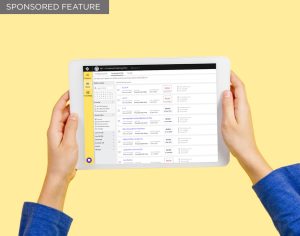Businesses must act quickly or face missing out on limited BBLS and CBILS funding
There’s no denying that 2020 has had its fair share of dark clouds looming overhead for UK businesses. And, with rumours of a recession confirmed last month, the road to economic recovery is unlikely to be without a few twists and turns. There is however a silver lining in that, once secured, the government-backed funding available to businesses right now will continue to provide support long into 2021 ‘ and beyond.
In their latest report covering Q2 2020, the SME Finance Monitor found that almost all SMEs knew of one or more government support scheme with 73% aware of the Coronavirus Business Interruption Loan Scheme (CBILS), for example, and 65% aware of the Bounce Back Loan Scheme (BBLS). That’s a massive jump from pre-pandemic support scheme awareness which rarely exceeded 30%.
The crucial thing for businesses to understand now is that the opportunity to apply for funding through the BBLS or CBILS will end on 4 November and 30 September respectively. With 87% of businesses negatively impacted by COVID-19 according to the SME Finance Monitor, and the government reporting an 89% approval rate for those applying for these schemes, there’s no reason for SMEs not to secure funding while they can.
As of last month, well over 1 million Bounce Back loans had been approved. These totalled over £35 billion. But Bounce Back loans are only available up to £50,000 which begs the question: will there be a rush on CBILS applications when businesses start running out of BBLS funds? Possibly in anticipation of this, the UK government has given accredited CBILS lenders until the end of November to process any of the applications they receive by midnight on the 30 September deadline.
Where businesses can really benefit from the CBILS is that the range of funding solutions available is much wider, extending to include ongoing cash flow solutions that will help them trade their way out of difficulty over time. These include term loans, asset finance, overdrafts, invoice finance and invoice-backed revolving credit facilities. SMEs can also access much more funding through these solutions (up to £5 million).
Having interviewed over 4,000 SMEs of varying sizes and sectors, the SME Finance Monitor found that more than half of those that were looking for funding said they needed it for cash flow. The flexible nature of a CBILS invoice finance or revolving credit facility, for example, can give businesses access to funding on-demand by leveraging the money already owed to them in outstanding invoices.
One way to understand this kind of invoice-backed funding is to think of an SME’s ledger as a kind of tank full of working capital. A CBILS facility gives the business the opportunity to advance outstanding invoices and withdraw the funds that aren’t due to be paid for 30, 60, 90 days ‘ like opening a tap. When the invoices are settled by their clients, the tank is topped up and the debt is repaid. A business can simply repeat this withdraw, spend and repay cycle whenever they need to.
Because the government covers fees and interest on CBILS facilities for 12 months, SMEs can access this much-needed working capital very affordably for an extended period of time. After a year, they can continue to use these facilities for the remainder of the agreed term but will take over fee and interest payments. The hope of course is that a year from now they’ll be in a much better position to do so.
It’s easy to assume that government support schemes like the CBILS and BBLS are a quick fix to help businesses deal with the challenges they’re facing in the current climate. But actually, these funding solutions offer much more than that. Accessing finance now ‘ while it’s government-backed and without fees or interest ‘ is a way for businesses to ensure long-term stability. For any small business, cash is king. Having this readily available both easily and affordably for the next one, two or even five years is invaluable.
Now more than ever businesses need to be checking in with their accountants, brokers, bank managers or whoever else they go to for financial advice. They should work with these trusted advisers to take stock of their current cash flow position, explore the government support available and plot an ongoing plan for accessing and using those funds to their advantage. While there’s still time to apply.
SMEs have had to navigate unprecedented challenges over the last six months and the unfortunate reality is that some haven’t managed to survive. But we have also seen unbelievable resilience; businesses pivoting quickly to adapt to the ever changing situation and thriving despite incredibly difficult circumstances. By accessing the funding available to them right now, these businesses have a unique and fleeting opportunity to set themselves up, not just for short-term recovery, but for growth, stability and success long into the future.
“
Share via:








































